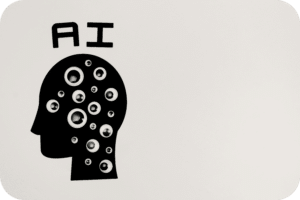The Artificial Intelligence (AI) space is booming, and companies clearly do not want to be left behind.

A study by SnapLogic revealed that “93 per cent of US and UK organisations consider AI to be a business priority and have projects planned or already in production.”
However, despite businesses recognising the huge opportunities that AI represents – such as cost savings and efficiency improvements – putting them into practice is a different ball game. More than half (51 per cent) of organisations don’t have the right mix of skilled AI talent in-house to bring their strategies to life.
Indeed, a lack of skilled talent was cited by the surveyed businesses as the number one barrier to progressing their AI initiatives, followed by lack of budget, lack of access to the right technology, and lack of access to useful data.
There is clearly a widening AI skills gap to address – only one in ten global workers have in-demand AI skills, despite one quarter of global workers ranking AI proficiency in the top three most important digital skills to have.
What makes this AI skills gap harmful is the hefty cost it’s incurring – the digital skills shortage is costing the UK economy £12.8bn.
Where does the AI Skills Gap & Digital Skills shortage come from?

The pace at which the AI space is accelerating means that the supply of skills and knowledge needed to harness it and use it to execute ambitious business goals is struggling to keep up.
Even when ignoring the technical aspects of the field, the sheer scale of the ambition behind AI is daunting, as the head of Google Brain, put it: “We want to go from thousands of organisations solving machine learning problems to millions.”
In the UK, predictions identify a need for more than half a million new workers within the most skilled digital occupations (including AI) this year.
And it’s not just the speed at which AI moves that makes it challenging to recruit for. AI is such a vast, and complex area of computer science that even the world’s wealthiest companies are struggling to recruit at the pace of demand.
The nature of the technology means that new discoveries and innovations change the landscape on a frequent basis, creating a paradox where AI scientists require years of intense study, but the field is constantly shifting. It is therefore difficult for academic institutions to keep their courses aligned to the needs of the business world.
How can we address the AI skills Gap?

Investing within
Organisations who are struggling to hire AI talent might consider a solution closer to home –by arming current staff with expertise that will help to bridge the AI skills gap. When asked how they would build the right internal AI/ML team, 68 per cent of organisations said that they were planning to invest in training and upskilling existing employees and 63 per cent of companies are providing in-house data analytics training.
This may be more of a temporary solution until the AI skills gap can be filled with permanent employees, but improving digital and AI literacy among the wider workforce will only serve to complement other aspects of AI implementation. For example, establishing trust and confidence in AI, which impacts the speed of its adoption, and in turn determines how quickly and widely its benefits can be reaped by an organisation.
Broadening the talent pool
As with addressing any skills shortage, businesses need to ensure that they are reaching the biggest pool of talent as possible, and that no section of society is filtered out. This is clearly an issue within the AI space too – just 22 per cent of people in AI roles are female.
If the industry is to bridge the AI skills gap, work must be done to encourage women and ethnic minorities into the sector. After all, women make up 52.7 per cent of the UK workforce.
Diversifying the talent pool doesn’t only mean increased numbers of candidates, it also means more perspectives, leading to better outcomes. We know that innovation relies on having a variety of perspectives and approaches around the table – a team of people who all come from the same background and outlook, for example, will have gaps in their knowledge and this will hamper progress. It may be that by diversifying the talent stream, an AI skills gap can be closed more quickly.
Educating for the future
In the longer-term, encouraging AI literacy from a younger age is also an option.
The AI Council has recommended an online academy for understanding AI, which would provide trusted materials and initiatives to support teachers, school students and lifelong learning. This would help to bridge the gulf between what is currently taught in schools and the digital skills that people will need in the future.
Can we solve this AI problem with…AI?

There is also a possibility that AI itself will hold the key to solving the AI skills gap.
Companies like Google are developing AutoML– which has the aim of creating AI that can teach itself to create further AI systems. If this initiative is successful, it could be very powerful for mid-sized businesses that are unable to compete with tech giants for top-tier talent.
If AI is indeed set to be the ‘new electricity’ as coined by computer scientist, Andrew Ng, business leaders should act fast to ensure that their teams are best placed to capitalise.
In the meantime, Harnham can help with your hiring needs, our consultants understand the challenges faced by business leaders as they look for quality talent to fulfil crucial AI roles – and have a comprehensive view of the jobs market landscape – get in touch today.

























